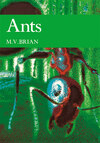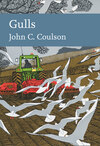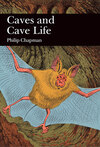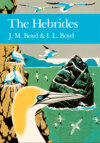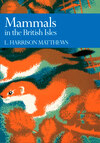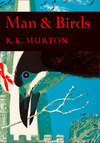Читать книгу: «Ants», страница 3
CHARACTERISTICS AND DISTRIBUTION
Only four of the nine or so sub-families of the family Formicidae are represented in this country. Two of these, Ponerinae and Dolichoderinae, have only one genus here. Of the other two the Myrmicinae have ten and the Formicinae two genera. The Ponerinae and Myrmicinae have certain similarities and are grouped together in a poneroid complex whereas the Dolichoderinae and Formicinae are included in a myrmecoid complex (named after the basic Australian sub-family Myrmeciinae).
The Ponerinae contain a mixture of very primitive and highly-evolved forms which are mainly tropical and Australian in distribution. In southern Europe there are at present some nine species but fossil evidence shows that there were once many more. Primitive features are the possession of a sting in the females (as in wasps) and the structural similarity between queens and workers; the latter lack only wings and ocelli. All ponerines have a constriction between the first and second segments of the gaster; here the integument forms, on the underside, an organ for stridulating. They feed largely on small animals and show foraging behaviour that ranges from the highly individual to the advanced legionary type. Larvae are able to eat prey directly and even to move about the nest slightly in the less advanced genera.
Ponera coarcta has a worldwide distribution but occurs in only 13 of the 152 vice-counties of the British Isles, all in southern England. Its colonies are small and inconspicuous and usually live in woodland amongst the stones and moss of the soil surface. There is another species, Hypoponera punctatissima, that is commonly found in glasshouses and, very rarely, in sunny situations outside.
The Myrmicinae are thought to have evolved from ponerine ants; both groups retain stings and have a tendency to a thick, wrinkled cuticle with spines on the mesosoma. The myrmicine workers have a much simpler and smaller form than the queens. Their waist comprises two segments; this waist gives extraordinary flexibility to the gaster, and enables the sting at its tip to be brought round under the body and pushed forwards in front of the head. The integuments of the second waist on the first gastral segments form a stridulatory organ on the upper side instead of the underside, as in the ponerines. Only in the more primitive genera do the workers lay eggs. Seed-eating is common in this sub-family; it also includes the only group to have perfected a method of culturing and eating fungi. Many genera have evolved social parasitism; of the ten indigenous here half show this tendency.
Undoubtedly the most widespread genus in the British Isles is Myrmica. It is a brownish-red ant found in many different habitats, in small colonies that rarely exceed 3000 workers. They sting effectively and painfully if disturbed. Myrmica reaches into every one of our islands. There are eight species; one, Myrmica ruginodis, is apparently the only ant to have colonized Shetland and the only species so far which has been found in all of the 152 vice-counties. At the opposite extreme there is Myrmica speciodes found only in Kent and Sussex, although it is more common in Europe. This is one genus which shows hardly any geographical bias here, for of the eight species which occur in southern England, six are also found in Scotland.
The next most common genus is Leptothorax, although only one of its four species (Leptothorax acervorum) is widely, though patchily, distributed throughout the British Isles. It is a small, brown ant living in small colonies rich in queens, nesting in quite hard wood or in twigs or under the surface crust of soil. The other three species are restricted to southern England.
Tetramorium caespitum is the only species of this genus (which is predominantly African) in the British Isles. It is a small, black ant spread widely over central Europe but restricted here to the south and farther north to coastal zones. Such habitats have a high incidence of sunshine in spring so that the soil surface where the ants nest is warmed early in the season. Furthermore, temperatures do not fall very much in winter, especially on the western coasts. Tetramorium caespitum makes large, highly-organized colonies in lowland heath in the south. In autumn it collects and stores the seeds of heather and grass for spring feeding.
Two myrmicine genera are parasitic on Tetramorium caespitum in this country. One, Strongylognathus (one species Strongylognathus testaceus), has workers of about the same size and shape as its host but they are pale brown and have curved, toothless mandibles. The sexuals are not much bigger and contrast strikingly with the large black queen of Tetramorium. It is rare, even where it is known to exist in Dorset and Hampshire. The other parasite of Tetramorium is Anergates atratulus. It has no workers and the males are wingless and curiously shaped. Again, this species has only been found in the middle south of England. Very few of the nests of Tetramorium are parasitized; this is so, even in France where both host and parasite are quite widespread.
Stenamma westwoodii is a rare ant limited to the south and rarely seen, even on the Continent. Myrmecina graminicola is a dark, thickset species which nests deep in the soil in sunny places in southern England; sometimes it makes galleries in Myrmica nests where it probably preys on the brood. Formicoxenus nitidulus is a small ant with a highly polished cuticle and lives in nests with wood ants. Solenopsis fugax is a small, yellow ant living underground near Lasius or Formica nests, eating their brood; it is restricted to the south in this country. Finally comes a completely parasitic, workerless species, Sifolinia karavajevi, only recently found here in a colony of Myrmica sabuleti. Emery first caught a female flying near Siena in 1907. The species has been found in Europe and Algeria on a few occasions but the number of colonies parasitized by species of Sifolinia in the whole hemisphere must be remarkably small.
Next are the two myrmecoid sub-families, Formicinae and Dolichoderinae. Both have only one joint in the waist which often carries a well-developed scale, particularly in the former sub-family. The gaster is unconstricted and contains no sting. Instead there is a poison apparatus opening in the Formicinae in a circular orifice, usually surrounded by hairs just below the anus. A jet of fluid consisting largely of formic acid can be shot for several centimetres from this after it has been bent round under the mesosoma and directed forwards. The Dolichoderinae do not produce a liquid jet but in most cases a sticky toxic chemical is extruded from their slit-shaped anus. The difference between queens and workers in the Formicinae is considerable, though the workers do lay eggs in some genera and may produce females as well as males from unfertilized eggs. Other primitive features are the retention of a cocoon to enclose the pupa, the presence of visible ocelli in workers (in some genera) and the incompletely-fused mesosomal sutures. Often, too, they are highly individual and forage singly. Most seem to have a well-developed valve between the crop where imbibed food is stored before regurgitation to larvae and the midgut where food is digested. This is kept closed by the presence of fluid in the crop and does not need a persistent muscular effort, as it is thought to do in the Myrmicinae. Often these ants have quite good vision through the usual insect compound eyes but some species rely entirely on chemical and tactile senses. All make use of nectar and honeydew as well as hunting prey but they do not appear to eat seeds very much (unless these have an oily caruncle).
There are only two genera of formicine ants represented in the British Isles, Lasius and Formica. Lasius are smaller than Formica and have less well-developed eyes. They form a large, diverse genus that is widely distributed throughout the temperate parts of the Northern Hemisphere. The eight British species have a slightly southerly bias: there are only five in Scotland and none at all in the Northern Isles (Hebrides, Orkney and Shetland.) Some are yellow and live entirely in the soil, others are jet black and forage in files up trees for honeydew. Their colonies are often enormous, extending to tens of thousands, and they may have only one queen. In general Lasius are very skilled at making nests out of soil or wood pulp. Undoubtedly the most striking is the jet black, large-headed Lasius fuliginosus which forages up tall trees from a carton nest in a rotting stump. It occurs sporadically in southern England. The queens are not much bigger than the workers and are unable to found colonies alone; they parasitize Lasius umbratus and other species as a first stage in colony formation. Lasius umbratus also has small queens and seems to be an obligate social parasite of Lasius niger. It is not often seen above ground, as its name implies, but is said to accompany Lasius fuliginosus up trees from mixed nests. Lasius brunneus, too, nests in old trees, usually oak, in open country; it has a curious distribution in the south Midlands, in part of which it has taken to entering the timber of buildings. Lasius alienus, a small, brown species, lives in subsurface galleries in the warm soils of heathland, limestone or chalk; it ejects the excavated soil to form characteristic craters in spring. Very common in Europe it extends like Tetramorium caespitum into Ireland and Scotland along the coasts. The behaviour of this ant seems to vary geographically: thus in England it rarely ascends into bushes, as it does in the Mediterranean area, but in America it lives in woodland. Lasius flavus is even more confined to the soil and in many parts of western Europe it builds large mounds of soil which are permanently covered with vegetation and which become a conspicuous feature of the landscape in areas of uncultivated grassland. It ranges throughout the British Isles except for parts of northern Scotland and Ireland. In many places, however, it is unable to form mounds: on steep slopes, in areas of high rainfall, in dry sandy soil or in cultivated grassland.
One of the most commonly encountered ants is Lasius niger. It is widely distributed throughout the British Isles but appears to be absent from some places in Ireland and Scotland. Bushy scrubland and gardens or wet places are its favourite habitats and it inhabits grassland only when stones or the mounds of Lasius flavus, which is a much more skilful builder, are available for it to nest in.
Formica is a genus of big, long-legged ants that spend their foraging lives in shrubs and trees and may build large mound nests of plant debris, although some only excavate galleries and chambers in the soil. It is widely distributed throughout the cooler parts of the Northern Hemisphere. There are eleven species in this country, nine in southern England, five in northern England, six in Scotland, five in Wales and three in Ireland. It thus shows a considerable southern bias.
The simplest Formica species are Formica fusca and Formica lemani. Both are black, have relatively small colonies and live in simple excavated nests in soil. They have strong workers that hunt and forage in bushes alone and are capable of carrying large prey back to the nest. These two species differ in several small ways; Formica fusca is less hairy, has up to half its pupae bare and is said to have fewer queens; it seems to be absent from all of Scotland except the Western Isles. Formica lemani occurs farther north than Formica fusca and is the only Formica in the Northern Isles. Both the species are common and widespread wherever they occur and in areas where they overlap Formica lemani tends to live in the cooler zones with the more northerly aspect.
There are also a number of rare Formica in this country, allied to Formica fusca; Formica cunicularia occurs in England and is slightly browner and hairier than fusca and often collects some plant material to make a small mound nest; Formica rufibarbis is quite reddish and very local. These are both common on the mainland of Europe. Formica transkaucasica, a jet black and shiny ant, is very rare, even in the south, but extends widely into Asia and is said to be the species which lives highest in the Himalayas. In England it is a specialist bog liver and covers its nests with small domes of cut grass, often on the tops of Molinia tussocks. Formica sanguinea is a large, red ant allied to the wood ants and has the habit of collecting the pupae of Formica fusca; many of these are eaten but some hatch out and the fusca workers stay on in the sanguinea nests, co-operating in the nest work; they have misleadingly been called ‘slaves’. The queens enter Formicafusca nests and replace the normal queen, thus living temporarily as social parasites. Formica sanguinea is widely but patchily distributed in the British Isles; it occurs in Scotland and southern England but not in northern England, Wales or Ireland. Formica exsecta is a small wood ant with a distribution like that of Formica sanguinea; it can be recognized by the cut-out scale and back of the head and by the fact that it builds mounds of vegetation in scrub and heath that are never very large and are really not much more than thatched soil mounds.
Finally in this cursory survey come the spectacular wood ants, well known for making huge mounds of vegetation debris with tracks to and up large forest trees on which they hunt for food. All have good sight and are expert with jets of formic acid which they can shoot several centimetres. There are three species. Formica rufa ranges over most of eastern and western England but is rare in the north and absent in Scotland and Ireland. Formica lugubris by contrast ranges from Wales and Ireland through northern England to Scotland, where it is widespread in the Highlands but apparently not in the Lowlands. The third, Formica aquilonia, is almost confined to the Scottish Highlands but has been recorded from one place in Ulster. It is an inhabitant of northern Europe and the High Alps. The differences in ecology between these species, so far as they are known, will be discussed later. On the European mainland there are two other species; one, Formicapolyctena, is very like rufa but has many more queens. Another, Formica pratensis, is less wood-bound than rufa and lives in meadows and roadsides, where it makes rather small nests. In central southern England it has recently been extinguished by suburban development.
The sub-family Dolichoderinae is represented only by the species Tapinoma erraticum, an active small, black ant with many queens in its colonies. This species makes nests in heathland; they are a mere 10 cm across and are covered with, and in part constructed of, vegetable debris. The ants seem always to be moving from one to another during the summer. Though widely distributed in Europe this species is confined to the central south of this country.
SPECIES RICHNESS
It is quite obvious from what has been said that the south is richer in species than the north. To be precise, of the 42 so far found in the British Isles, 33 occur in Dorset, 31 in Hampshire, 29 in Surrey, 27 in the Isle of Wight, 26 in East Kent and South Devon and 24 in Berkshire (see fig. 8). The regional divisions into which the Watsonian system groups its vice-counties show that Channel has 37, Thames 31 and Severn only 25 species. South Wales (24), Anglia (23), Trent (20), North Wales (18), and Lakes (18) come next. Not far behind are Humber (16), Mersey (15), Tyne (14) and the Scottish Lowlands West and East (14). The number rises to 15 in the West Highlands and 16 in the Eastern Highlands but drops again to 14 in the Northern Highlands. There are only 4 species in the Northern Isles. In Ireland, Leinster (18) and Munster (17) are twice as rich as Ulster (9); Connaught with 14 is intermediate.
This southerly tendency can be seen in ant distribution over the whole world. The humid Tropics have by far the greatest number. No doubt temperature is the most important single factor in this but rainfall, soil type, vegetation and humidity are subsidiary and of course highly interrelated. In this country the temperature of the soil where the ants live is probably more important than the air temperature and ant distribution is strongly influenced by the hours of sunshine in spring; this can be seen very clearly from fig. 8 in which the hours of sunshine in May have been plotted over the number of species per vice-county.

FIG. 8. The number of species of ant per vice-county and the zones where daily sunlight in May averages 6 to 7 hours. Black: over 30 species; densely dotted: over 20; lightly dotted: over 10; blank: between 1 and 10. The information on ants was obtained from the Transactions of the Society for British Entomology, Volume 16, Part 3, pages 93–121, Collingwood, C. A. and Barrett, K. E. J. The information on sunlight is from the Climatological Atlas of the British Isles, published by H.M.S.O. in 1952.
CHAPTER 4
FEEDING
EARLY ants lived on soil insects and this is still true of some primitive Ponerines. As simple predators ants were rather a long way from the primary source of food, the green plant, and their scope for population growth and spread and evolution was limited. The use of plant carbohydrates for energy, saving protein-rich foods, cannot have been long delayed as nectar-gathering is well established in the other primitive branch, the Myrmeciinae. Nectar is the common source of sugar in nature but other sources such as honeydew and fruit, both of which are quite easily recognized from their sugar and organic acid content, are more often used by ants. Seeds, though they are a very valuable source of food, are not eaten much, perhaps because their nutritive value is less easily recognized; they are, after all, covered in a tough skin. Fungi also have food value but are hardly used at all, though some of their threads which enter nest cavities from the surrounding wood or soil or which grow on their rubbish heaps may be cut and eaten. Only one group of ants, in tropical America, eat fungi regularly and systematically and these are cultivated in the nest and fed on vegetation which the ants collect regularly.
PREDATION AND SCAVENGING
Most predatory ants have a varied diet which usually includes a lot of small invertebrate animals of about their own size and an occasional vertebrate corpse. They are not impressive as hunters but not a great deal is in fact known about the circumstances in which they catch their prey and there is much work to be done in this field. From what is known so far it appears that they can detect other animals from a distance of a few centimetres. Thus wood ants are known to be able to see movements 10 cm away. In soil spaces and perhaps in foliage ants may be able to detect the vibrations made by small animals moving through the substratum and they certainly have an acute sense of smell. Once they have received a distance signal they approach slowly, alert for others, probably mainly smells, before actually attacking. As they get nearer to the potential prey they orientate with their head forward, jaws open and antennae retracted and make further exploratory movements. Clearly, they must not throw themselves into the jaws of an enemy and a secure grip on prey is an obvious advantage. Finally they pounce and snap. If a hold is obtained, usually on a leg or antenna, they quickly bring round their gaster and inject poison with their sting if they have one, otherwise they spray penetrating or adhesive toxins. Not many ants are really alone when hunting, there are others nearby usually that help by flushing out prey or gathering round to help pin one down; they are more dog-like than cat-like on the whole.
Many small invertebrates are easily caught and immobilized; the small larvae of flies and moths and beetles, for example. Many others, particularly adults, have escape mechanisms. Thus, springtails (Collembola), which are very much valued as food by Myrmica and Lasius, can usually escape instantly by jumping but are easily caught while they are changing their skins, stuck in a water droplet or in some way damaged. The larvae of many sawflies and moths can flick their bodies smartly, others are so hairy that ants find them difficult to get hold of and many caterpillars can simply slip away on a thread of silk; some protect themselves with a case of vegetable material. To escape, other insects kick or produce repellents or sticky exudates from special skin glands, such as the cornicles of aphids. Those with a hard, shiny cuticle, like beetles, may be difficult to grip and impossible to sting. The great variety of these defensive mechanisms make it highly probable that many prey animals are only caught when they are incapacitated, perhaps through age, perhaps by mechanical damage (such as being trodden on), by wing failure, by the necessity to moult or even by transient low temperatures or weak light (some insects can only fly in sunlight). Bugs, flies and spiders comprised 80–90% of the number of prey caught by species of Myrmica. Small spiders that live on and near the soil surface are a major constituent of this food (11–38% in different years). In Polish grassland from 1700 to 4000 spiders were caught in a year in one square metre. In May, June and July, when feeding peaks, between sixteen and seventy-four spiders may be taken each day from one square metre.
Undoubtedly, an important element in the diet of most ants is other ants. Each summer they eat large numbers of sexuals, both of their own and other species, especially those that are unlucky enough to descend after the mating flight on to already occupied territory. Also, in spring when food is scarce and catastrophic fires destroy the vegetation, a wider search for food often leads to fighting between workers of different colonies and species in which a lot die. The corpses are taken back to the nest and sucked dry: an economical way of adjusting the population to a sharp drop in food supply.
Information is very much needed about the food of different colonies and species at different times of year. Some ecologists have taken samples of foragers on their return to the nest and identified what they were carrying. One has recently invented an ingenious trap which has been used to study the food of the wood ant, a species with two advantages: well-defined tracks above ground and large workers. A whole nest was surrounded by a barrier soaked in repellent oil and workers were induced to pass over this on specially constructed wooden bridges. One was used for incoming and the other for outgoing traffic. This was possible because although ants are prepared to drop a few centimetres from the end of a bridge on to the soil below they cannot reach up to return the same way. So, it was only necessary to place strips with the drop outside the barrier to take outgoing traffic and the drop inside the barrier for ingoing traffic. Those returning dropped into a box from which they could only escape by small holes little bigger than their bodies and they left behind anything they had been carrying in their jaws. Perhaps some day, traps on a similar principle will be devised for ants which forage underground, but this is likely to be much more difficult.
Wood ants eat many invertebrates which they catch both in the trees and on the ground. A large number of these are flies (including midges and crane flies (Tipula spp.)) and many kinds of aphids; also, in season, winged ants, particularly of the genera Lasius and Myrmica. A lot of these insects are forest pests and the establishment of wood ant populations has become, at least in Europe, an important part of woodland management. In years when defoliating insects are very abundant and trees are stripped of their leaves in summer, conspicuous green islands are left around areas where ants nest. These defoliators include the larvae of various moths and sawflies that feed on oaks, pine, spruce and larch. Pupae and adults are also eaten. There are indications that wood ants will attack moving things in preference to quiet, still ones; yet it was found by trapping that they collected a lot of prey at night. There are of course a great many flying insects that settle in the foliage of trees and bushes during darkness; these could perhaps be easily located by smell. A wood ants’ nest was surrounded by guttering into which they threw their refuse. This not only consisted of empty cocoon fragments as expected but of many other insects and other odd items that were collected but not eaten; evidently they take in a great many more things than they use.
Food collection by Formica aquilonia has been studied in detail in an old Caledonian forest. Some five or six trackways leave each nest and go to trees on which prey are caught and aphids are tended for honeydew. After leaving the nest, ants pass round the perimeter and then leave on any one of the tracks. There is just a slight tendency for individuals to use the same track out as they use in. This is oddly at variance with other results which have shown taat Formica rufa and its allies come near to partitioning their foraging grounds between groups of workers that are fairly fixed in individual composition. Different species, different types of food collection or just different times of year may explain this apparent contradiction. Many of the foragers of Formica aquilonia leave the trackways to forage in the neighbouring herbs and observations show that this ‘leakage’ occurs at a constant rate and that the search for prey is quite random until very high prey densities are encountered. Then a recruitment mechanism increases the number of ants entering the area. Temperature affects the rate of flow of traffic on the trackways; a rise from 8 to 18% increases it 5 times. This is probably due to a greater availability of prey at high temperatures, as well as to a greater number of foragers joining in.
Rate of traffic flow is also very much affected by obstacles. If the leaves and twigs are swept from a track the walking rate rises as much as 10%; at 20° C it is normally about a metre a minute. In sections where the tracks pass between rocks traffic density is often so high that collisions are frequent. This causes some delay as the ants stop to examine each other with their antennae. There seems to be very little organization of the flow near the nest: a slight tendency exists for incoming workers to move on the outside and outgoing ones in the centre of the track. In the July of the study there were about seventy thousand foragers active; one in five brought an insect back and it was estimated that about a hundred thousand insects were collected each day.
All this information is not very well received by entomologists primarily interested in the insects which are destroyed. They claim, not without reason, that wood ants impoverish the fauna, but the interrelationships between insects are so complicated and numerous that it is more likely that they merely prevent any one type from predominating and thus preserve a richer mixture at a lower density. As has been pointed out there is plenty of evidence that they concentrate on prey that is momentarily superabundant. Birds of course do this too, and as there are many which live on insects in forests they might be expected to compete with ants. Curiously, the evidence is to the contrary and it is suggested that ants dislodge many insects whilst hunting which they lose and these are caught by birds. This sort of situation is well known in the Tropics where some birds subsist largely by collecting the prey which escapes from the devastating columns of army ants.
The food of Lasius flavus was a mystery until quite recently but it is now known that they eat a great many soil animals, including soft-bodied mites, beetle larvae (notably two species of wireworm), woodlice, other workers of their own species and, in season, queens caught after the nuptial flight. Interestingly enough, they eat more of their own species of queen than of Lasius niger. This last ant is more aggressive and larger than Lasius flavus and it forages both above and below the ground. No doubt as a result it has a much wider range of prey which includes several species of ant, larvae of beetles (again, frequently wireworms), caterpillars, bugs, earwigs, harvesters and woodlice. It has been seen collecting Cabbage White caterpillars in gardens.
In late summer, after a period of dry weather, fires may destroy all the vegetation above the soil surface in heathland. Then the ants Lasius alienus and Tetramorium caespitum eat many soil invertebrates, predominantly the long, slender centipede, Geophilus, and several kinds of wireworm. As already mentioned, food scarcity causes them to search more widely and they meet neighbouring ants much more often, fighting ensues and finally cannibalism. Myrmica eat aphids, springtails, fly larvae, adult flies, spiders and many other small creatures. Some species differences in food must exist as Myrmica scabrinodis is known to hunt nearer the soil in shorter vegetation than Myrmica ruginodis. These ants also remove flesh from the carcasses of dead birds and mammals.
A matter of considerable interest is whether ants control the number of honeydew aphids by butchering and eating surplus ones, and, if they do, how they recognize those that are surplus. Formica rufa is known to kill aphids that crawl away from the main clusters. They might only wander in this way if their food supply was overloaded; it happens particularly after storms which must of course be disturbing and at certain times of year for unknown reasons. Lasius niger, though it frequently collects honeydew from the Black Bean aphis (Aphis fabae) on broad beans, never takes any back to its nest, according to one investigator. Others have watched both this species and Lasius flavus carry dead aphids nestwards and feed them to their brood. The tendency with Lasius niger is probably to destroy aphids that can no longer produce honeydew, especially if these try to defend themselves with wax from their cornicles. This species also tends an aphid (Protrama flavescens) underground and kills and eats the parasitized ones selectively. Lasius flavus is now known to eat seven species of myrmecophilous aphids. As no other types of aphis are eaten so extensively it seems likely that a special predator/prey relationship has evolved. As they are taken in both young and old stages the basis on which the cull is made is unlikely to be senescence. There seems good evidence that these ants, after removing and eating all the honeydew they need, kill the surplus aphids from protein hunger. One possibility is that too much honeydew is produced when aphids are surplus, with the result that it leaks out and smears them and is decomposed by bacteria so that they are no longer recognized and protected by the foraging ants. Other ecologists have suggested that the honeydew which they offer deflects the ants’ aggressive actions by satisfying another facet of their appetite. There is some support for this in laboratory experiments with Myrmica which have shown that if sugar solution is provided, fewer flies are killed. There is also some evidence that clusters of aphids farthest from the nest are considered more expendable than clusters nearby. Clearly, our understanding of this relationship is rudimentary as yet; it seems that any abnormal state or activity, particularly unnatural movements, positions or smells, may cause the ants to attack instead of protect the aphids and that these abnormal conditions tend to arise more often when the aphids are overcrowded and in need of culling.
Начислим
+155
Покупайте книги и получайте бонусы в Литрес, Читай-городе и Буквоеде.
Участвовать в бонусной программе
